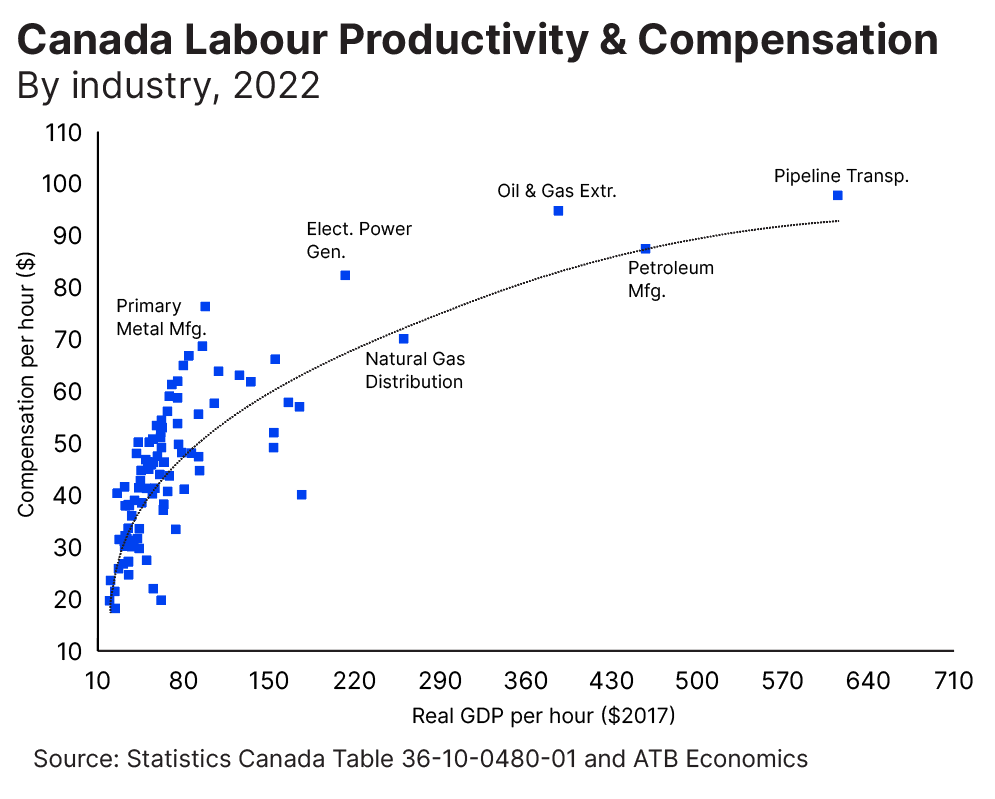A little more information on Productivity. I find it interesting that this is starting to be a regular discussion piece. It should already have been for at least the last 6 years.
Mark Parsons, ATB ECONOMICS | April 11, 2024
The productivity imperative:
Talk of Canada's sluggish productivity performance has been trending. Senior Deputy Governor Carolyn Rogers recently said the need to bolster productivity is “an emergency - it’s time to break the glass”.
Productivity is the ability to convert resources (raw materials, people and capital) into output. It ultimately determines a jurisdiction’s living standards. Nobel Prize-winning economist Paul Krugman once remarked: “Productivity isn’t everything, but, in the long-run, it is almost everything”.
While that sounds important, it also sounds a bit theoretical. It’s easy to dismiss productivity as an abstract academic concept.
Incomes are more relatable. In a Hub article released last week, University of Calgary professor Trevor Tombe shows a clear connection between declining real earnings growth and weak productivity, warning the “Great Canadian Slump” is back.
Another way to make the productivity-wage connection is by looking at industries. Statistics Canada maintains detailed productivity accounts for individual industries. As shown in the below figure, there is a strong relationship between the productivity of workers in an industry and the wages it pays.
Energy-related industries have among the highest levels of productivity and wages in Canada. We recently showed that the majority of Alberta’s higher overall labour productivity (vs. the national average) is due to the province having a higher concentration of workers in these industries.
Bottom line: Productivity shouldn’t be dismissed as a theoretical or academic concern. When labour productivity suffers on a sustained basis, it ultimately translates into lower overall wages for workers.
Owl chart Apr 11 2024
